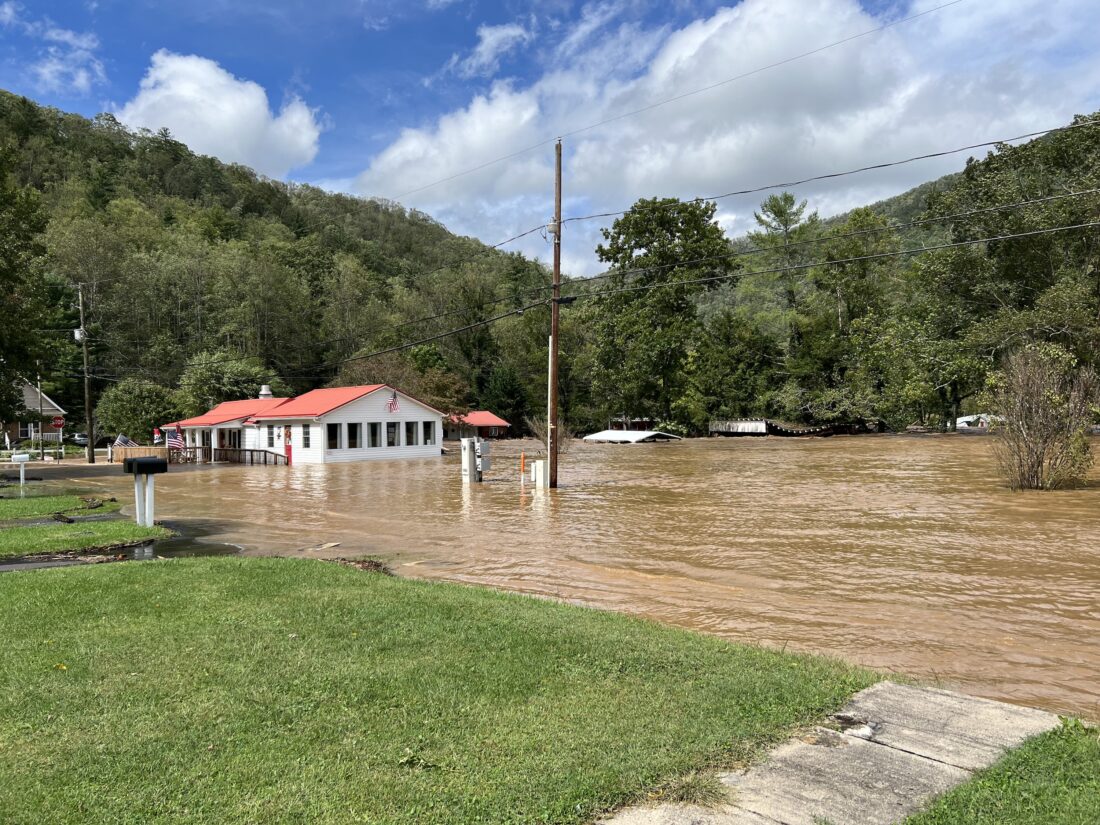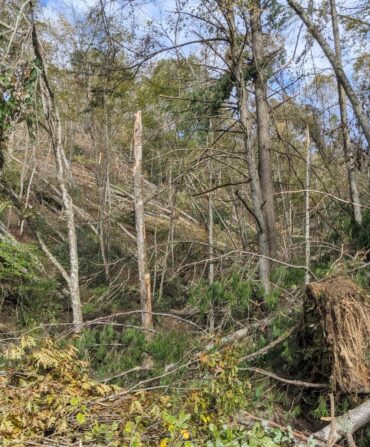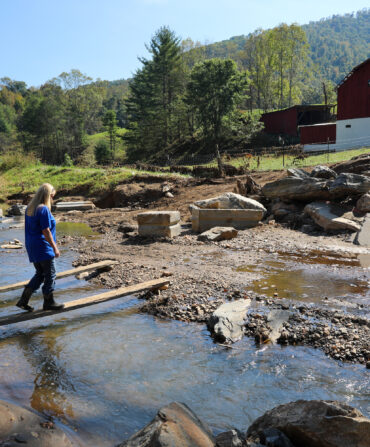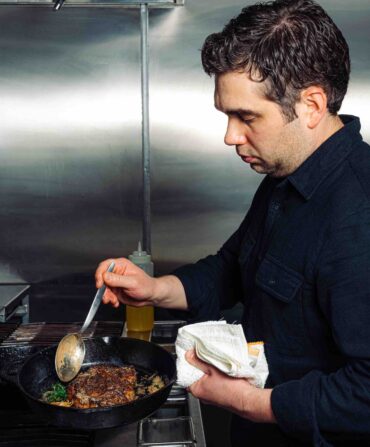The start of October is normally a time of high expectations in Damascus, a small town in Southwest Virginia that gets a big boost from sitting at the midway point of the thirty-five-mile Virginia Creeper Trail, a major fall-season draw for hikers and cyclists across the region.
What residents weren’t expecting was an unwelcome visitor—Hurricane Helene’s torrential remnants, which quickly swelled area streams into raging, landscape-altering forces of nature last weekend.
“It’s like a bomb went off in Damascus,” says Cory Forrester, who owns a cottage in the area. “There was so much debris coming down, the town itself is pretty unrecognizable. Sediment and big boulders are everywhere.”
Forrester’s storm story began last Friday morning, when he canceled a trip across the nearby state line to Boone, North Carolina, after getting word of flooding there. Not long after, the storm came to him: Wind and rain sent a sycamore crashing on a power pole, and Laurel Creek, which hugs the Creeper Trail as both pass through Damascus’s quaint downtown, started rising. Fast.
“My place is fifty yards back and about fifty feet above Laurel Creek,” he says. “A week ago I could walk across it with water up to maybe my knees. But in just a couple of hours, it rose to within four feet of my door. We saw fifty-foot trees, root balls and all, float by, and at least 200 propane tanks. It moved like whitewater—like the Upper Gauley River in West Virginia, only wider.”
After a few very tense hours, the Laurel receded. Forrester lost a deck, and an adjacent rental house he owns took on water, but those problems were put aside when he gained a view of the town’s lower elevations. Houses were off foundations, a fire truck was flipped on its side, parts of the Creeper Trail had disappeared beneath mud and debris, and sections of U.S. Route 58 near town had buckled into the flood.
“It’s just wrong to be in Damascus and start seeing Blackhawk helicopters buzzing over,” he says.
Some of those helicopters were no doubt flying toward neighboring mountain communities that fared even worse. Janet Bowling, along with several relatives visiting for a memorial service, rode out the deluge in tiny Taylor’s Valley, situated along the Creeper Trail about six miles east of Damascus.
“It started raining on Wednesday and picked up enough on Thursday that Valley Creek actually rerouted from one side of the community center to the other side,” recalls Bowling, who is president of that community center.

By Friday morning, trees were falling, drainage culverts were blocked, Valley Creek was lapping porches down the road, and Laurel Creek had broken its banks to encroach on homes down the hillside from Bowling. “Things were starting to get nasty at that point,” she says. “When we had Hurricane Hugo in 1989, we had flooding, but nothing like this.”
The real shock came next, as neighbors witnessed the home of Carl and Linda McMurray, both octogenarians, get picked up and virtually split in the torrent. Carl ended up in the water, where he clung to a tree downstream for hours until rescued by a helicopter. Linda had not been spotted, and when waters receded on Saturday, four men from the community waded to where the house had run aground. They cleared piles of debris to get inside and found Linda sitting in a rocking chair in her sewing room.
“She was alive and well, so they walked her up the bottom and sat her on the bridge until a water rescue team arrived,” Bowling says. “I sent her some ham rolls to eat and she said they were good, but she must have been hungry because I’m really not much of a cook.”
Those ham rolls were part of the spread the Bowling family had intended to use for the memorial service. In true Southern fashion, much of the rest, including a huge meatloaf, was trundled to the Creeper Trail Café, where a generator allowed its proprietors to feed rescue teams from Northern Virginia.
As it stands now, Taylor’s Valley has no electricity or water, and residents must hitch a ride in a four-by-four to the top of a ridge to find cell service. The vista is mostly debris heaps, including a torn-away railroad trestle. Several homes are gone, and more will need to be torn down. Access roads are limited to one lane hastily cleared by chainsaw, and there is fear that another substantial rain will collapse the road entirely. Remaining residents are waiting on a tanker truck of water and, hopefully, portable showers.
“It’s surreal to see the place you grew up in change overnight, and it has changed, the whole landscape has changed,” Bowling says. “But most of us are home people, raised here, and we’re a very resilient community. There are political differences, but right now we’re all one and work side by side. When the flood was raging so bad, I watched a neighbor’s flagpole leaning more and more, and then even the flag disappeared into the water. But the day after, someone raised an American flag above a pile of debris.”
Back in Damascus, Forrester is already working toward restoring the town, starting with a five-man crew to clear and assess the Creeper Trail. Emergency supplies are arriving, but the town needs more chainsaws and people who know how to use them.
“I think the Creeper Trail season can be saved,” he says. “Maybe not in Damascus, but the section from Abingdon to Damascus, which is half the trail, will reopen soon, so people need to come and ride it. We still have plenty to offer here.”








